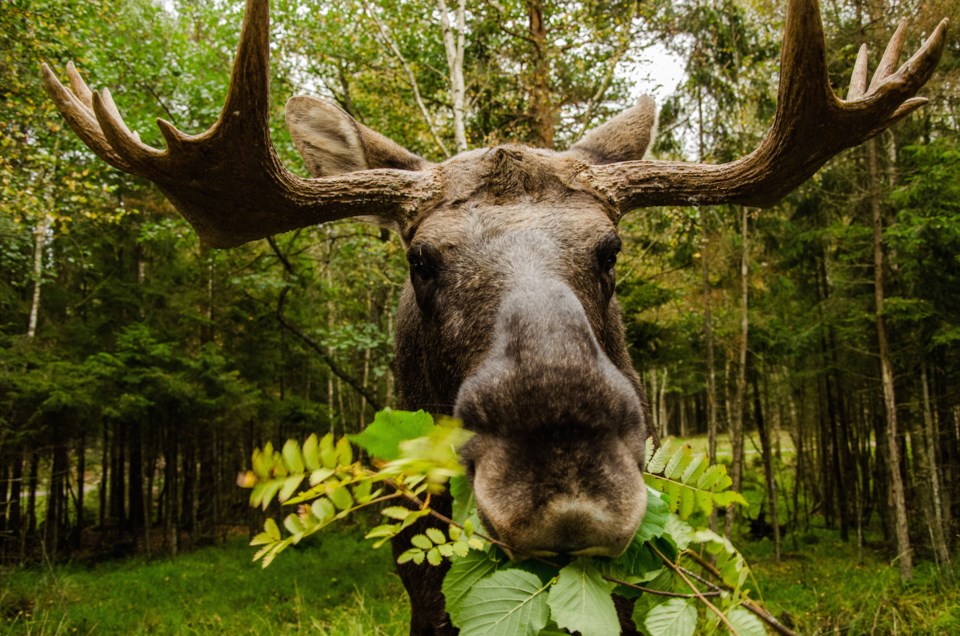NEWS RELEASE
MICHIGAN DEPARTMENT OF NATURAL RESOURCES
***************************
In survey results reported to the Michigan Natural Resources Commission in Roscommon today, the moose population estimate for the western Upper Peninsula was not statistically different from the last moose survey conducted in 2019.
The Michigan Department of Natural Resources has been surveying the western U.P.’s core moose population since 1997, typically every other winter. The 2023 survey marks the first survey completed since 2019 due to scheduling conflicts associated with the COVID-19 pandemic.
“The 2023 moose survey estimate was 426* individuals, which is not statistically different from the 2019 estimate of 509 individuals,” said Tyler Petroelje, northern Michigan wildlife research specialist with the Michigan Department of Natural Resources in Marquette. “This continues the trend of plateauing abundance where population growth over the last 12 years is now less than 1 percent.”
Aerial moose surveys are conducted over core moose habitat areas during winter to identify and tally bulls, cows and calves. This past winter’s survey was conducted by the DNR during portions of January and February.
The western U.P. moose core range covers about 1,400 square miles in parts of Marquette, Baraga, and Iron counties. Moose were translocated there from Canada in two separate efforts in 1985 and 1987.
The remainder of the U.P. is not surveyed for moose, but some pockets of higher-quality habitat are occupied by lesser numbers of moose, as seen in the eastern U.P. region. Moose have been observed there since the 1950s.
During the 2023 winter survey, researchers tallied 212 individual moose, which was 20 percent fewer than the 266 moose observed in the 2019 survey. A point estimate indicated a 16 percent decline in moose abundance.
“Looking at demographic data, with respect to previous surveys, we observed a comparable – but low – cow-to-calf ratio and percentage of calf numbers,” Petroelje said. “A potentially concerning observation is the lesser percentage of twins seen during this survey (9 percent) compared to the 10-year average of 15 percent.”
Petroelje said fewer twins, in combination with a lesser bull-to-cow ratio, could point to a recruitment issue, which is the number of individuals added to a population over a given time by either births or immigration.
DNR wildlife biologists will continue to monitor recruitment in the population in future surveys to determine whether a trend is developing or if 2023 was a poor calf year.
“Another factor that has affected the moose in the western U.P. is that 2022 was a high year for moose-vehicle crashes,” said John Pepin, DNR deputy public information officer in Marquette. “Collisions involved at least 20 moose last year in the western U.P. We remind motorists to watch for moose, especially when traveling at night.”
With the Moose Hunting Advisory Council’s recommendation to only allow moose hunting if a growth rate of greater than three percent is maintained, the DNR is not recommending implementing a hunting season. The same was true over the past several survey result years.
For more information on moose in Michigan, visit Michigan.gov/Moose.
*For those interested in the statistical variance behind the 2023 moose survey, the estimate was calculated with a 95 percent confidence interval between 334 and 518 individuals.
***************************



